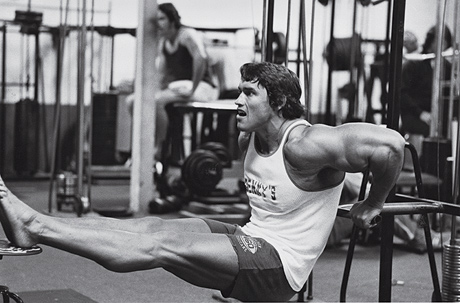A rarely discussed reason “flexible dieting” is so popular is that it dramatically reduces stress.
While declaring no food completely off limits may not be the best advice for everyone, for many it’s like an 800-pound doughnut that’s been suddenly lifted from their shoulders.
All food was suddenly fair game. More importantly (from a practicality and sustainability perspective) it meant on the fly changes, travel modifications, restaurant meals, even alcohol was allowed if you crunched the numbers. (Fabulous advice for those with substance abuse issues but I digress).
Point being: a little wiggle room sure makes things easier in the real world.
The same can be applied to programming, especially for size/hypertrophy or fat loss.
You have the flexibility to swap out exercises, even entire training days while maintaining the basic progression required to make progress and avoid the utter nonsense that is “muscle confusion.”
Here are just a few examples/contexts I use with clients.
Training Day Flexibility
You don’t have to stick to a Mon/Tues/Thurs/Fri or whatever weekly split like it’s set in stone. Just get in the required number of training days each week. Thats the priority, not the exact day, time, and location.
Don’t worry, you can train chest the day after training triceps. It ain’t ideal but such is life. Get the workout in and try to stick to the proper schedule next week.
Training Stimulus Flexibility
Some days you show up and just don’t have it. You can just go home and try again tomorrow (see point above) but having an alternate workout is a good idea.
For example I alternate between high intensity/low volume workouts and low intensity/high volume. The high intensity work tends to suffer when I’m fatigued or mentally “not there,” so when this happens I’ll do a high volume/low intensity session instead and try the heavy weights again next round.
The key is making sure both sets of workouts have progressions built in and should be tracked, so you can keep inching towards, well, progress.
Exercise Flexibility
I’m a big believer in a variety of exercises for both development and injury prevention — just not in the same program.
It’s better to stick with the same lifts and focus on making progress (there’s that word again) and THEN change things up completely after 12-16 weeks. (Or for the strength focused, at least change up the assistance work). Muscle confusion is for the mentally confused.
However, in commercial gyms you can’t always do what you want. Some nights the squat rack is all lined up or worse, become a “barbell curl/upright row/anything but a damn squat rack.”
Biomechanically, is a leg press a perfect substitute for a barbell squat? No. Though its still a damn good exercise. Certainly better than just going home and posting on Facebook about the all the idiots who “get in the way of your gains.”
And actually, depending on context (your bone structure, your squat form, and your goal), the leg press can be a far better choice.
Do 7 sets of 15-20 reps of leg presses, resting only 75-90 seconds between sets. I look forward to getting your postcard from Pump City.
You can also have set “alternate exercises” that you track and progress, much like having two different workout days.
Other flexibility things I use?
Vacation workouts, business trip workouts (NOT the same as a vacation), and adding/substracting intensity techniques and volume as per feedback.
And then there’s planning around work and family stress, but this is long enough and I have actual programming to do.
Manage stress or it will manage the shit out of you.

